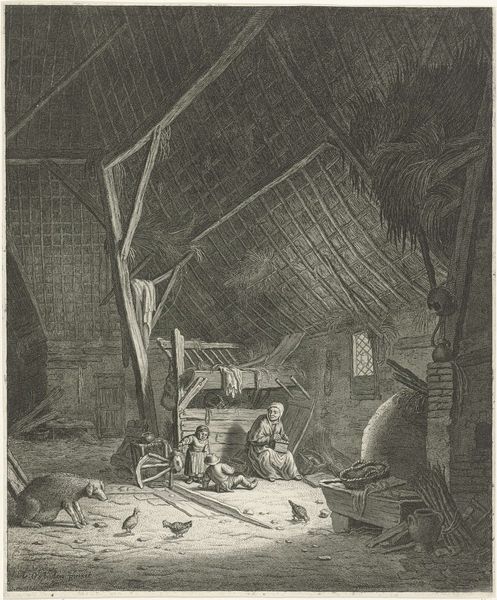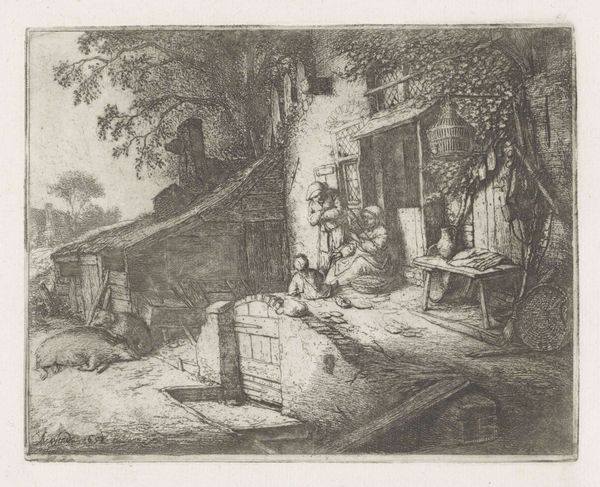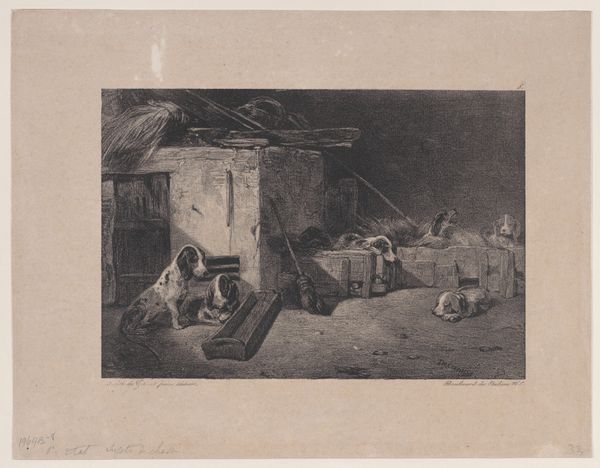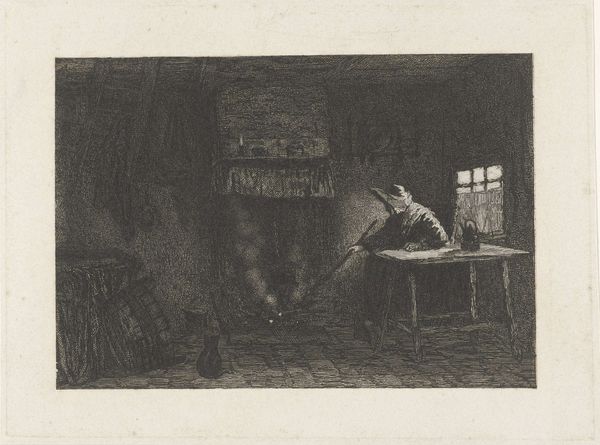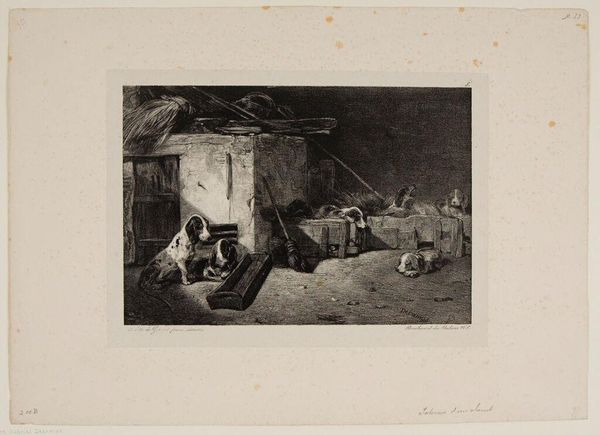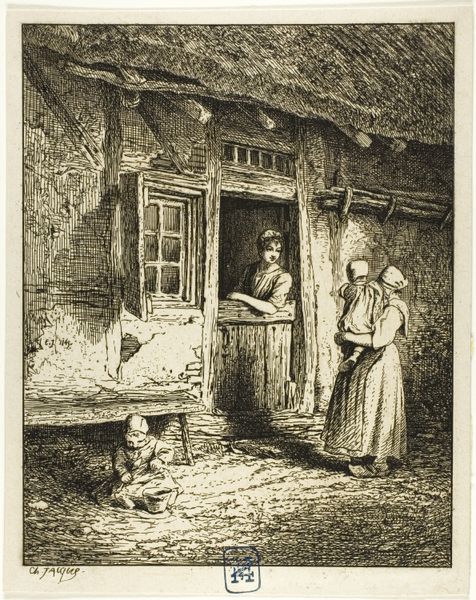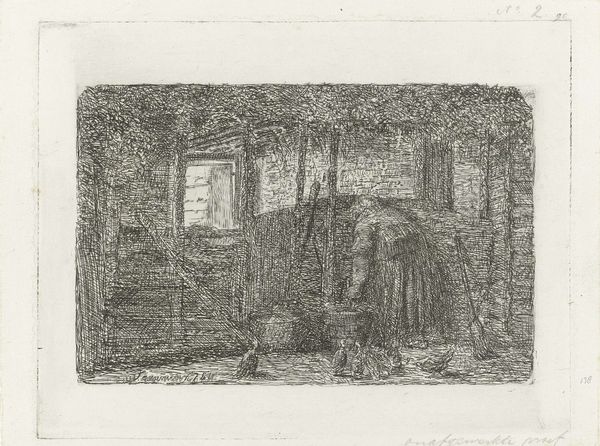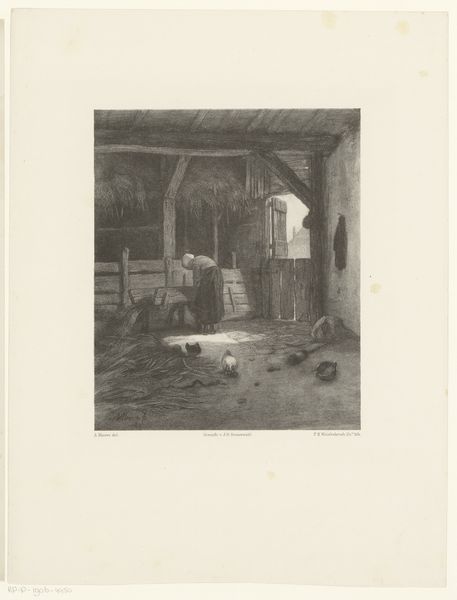
print, engraving
#
dutch-golden-age
# print
#
landscape
#
genre-painting
#
engraving
#
realism
Dimensions: height 234 mm, width 190 mm
Copyright: Rijks Museum: Open Domain
Curator: "Boereninterieur," dating from roughly 1630 to 1673, is the work of Jacob Louys. He worked after a design by Adriaen van Ostade, creating an engraving on paper. It's a very detailed genre scene, full of quiet activity. Editor: It’s so dark! The interior feels very cramped and… weighty. Even with the window, the composition seems to trap you inside the image. What did the artist hope to convey to viewers through this level of detail and oppressive space? Curator: Well, domestic interiors in the Dutch Golden Age were frequently laden with symbolic meaning. Take note of the objects included here. Everyday life itself was a theater for expressing values. The dim light could point toward humility, or hidden virtues. Notice the woman drawing water; is she simply performing a task, or does she signify purity through cleansing? Editor: The fact that it's a print is key here. It made images more accessible. More people than ever before could consume representations of domestic labor, right? The distribution is as crucial as the symbols it contains. How did people outside the peasant class receive such images, and what sort of labor arrangements existed in the society where Louys operated? Curator: Exactly. Prints had far reach, so we can see a growing interest in observing, and perhaps idealizing, different levels of society. I’m struck by how timeless this scene seems, yet the window reminds me there’s an outside world beyond this rural life. Consider, too, how animal figures appear to play symbolic roles: dog for fidelity, rat for earthly pleasure, or evil? Editor: To look closely at the objects, it’s easy to feel this overwhelming poverty depicted. This feels staged but how real or symbolic are all these figures really, though? But I agree there is clearly labor—a lived material reality captured in those rough marks, which resonates as a depiction of actual toil and everyday life. Curator: I appreciate the tangible connections that can exist with labor and materials! We each came into this image with separate notions about the culture and context represented, as well as how it connects to a wider cultural inheritance. Editor: Indeed! Now that I know so much, this simple genre painting makes me curious about the economic and cultural structures from that era.
Comments
No comments
Be the first to comment and join the conversation on the ultimate creative platform.
